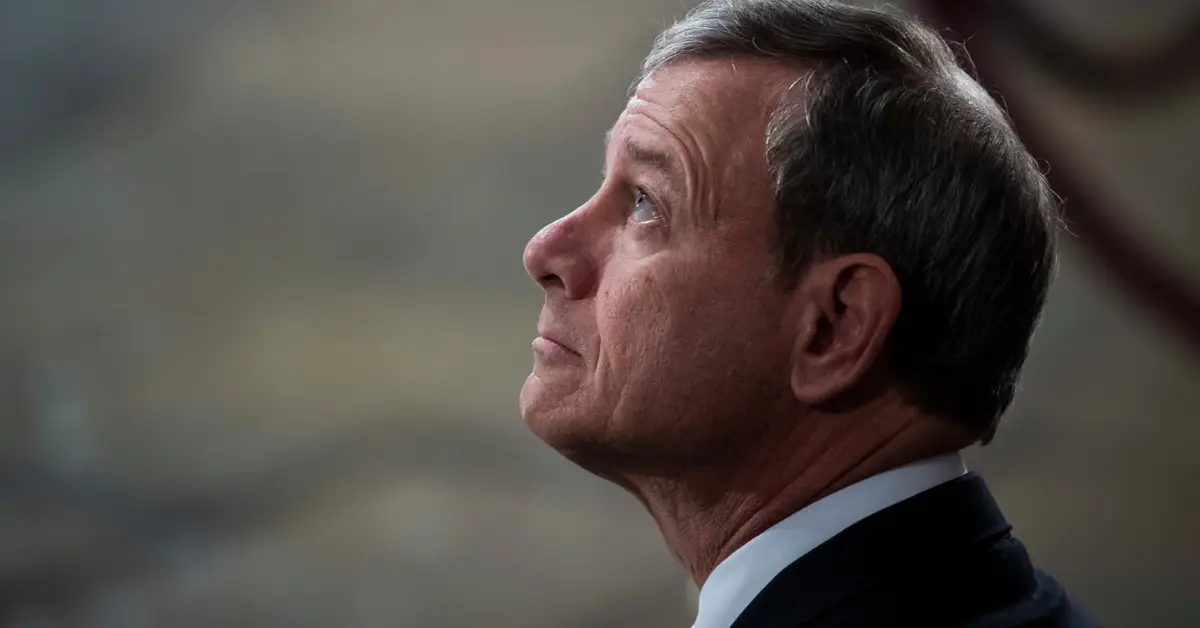Chief Justice John Roberts suggested Tuesday that the Supreme Court is aware of public concerns about the justices’ ethics. He says he’s seeking ways to address those concerns without sacrificing the court’s independence.
“I want to reassure people that I’m committed to ensuring that we as a court adhere to the highest standards of conduct,” Roberts said at a legal conference in Washington.
“We are continuing to look at things we can do to put that commitment into action, and I am confident there are ways to do so that is consistent with our status as an independent branch of government and with the separation of powers in the constitution.”
Roberts made no mention of Justice Clarence Thomas or recent reports that he received free luxury trips from a Texas developer for years without disclosing the majority of them on public disclosure forms, nor did he acknowledge significant pressure from Democrats in Congress for the Supreme Court to adopt a formal ethics code and binding enforcement mechanism.
However, Roberts admitted that the public outcry over the topic had caused some concern among the justices. He alluded to ethics as a “concern inside the court.”
Roberts’ remarks came a month after the Supreme Court released an extraordinary joint pronouncement on ethics. However, the “Statement on Ethics Principles and Practices” didn’t break any new ground, and it fell far short of establishing an enforceable code of behavior, as critics had hoped.
The chief justice delivered his remarks during a conference and ceremony commemorating the American Law Institute’s 100th anniversary, a group best recognized for authoring treatises on various topics of US law.
Look at the tweet posted by the Offical account of The Washington Post. You can also find more information about Supreme Court Seeks To Reassure the Public On Justices’ Ethics by reading the below tweet:-
Chief Justice John G. Roberts Jr. said Tuesday night that he was “confident” the Supreme Court will convince the public that it “adheres to the highest standards of conduct.” https://t.co/PGaAxJ9ChC
— The Washington Post (@washingtonpost) May 24, 2023
Roberts called his 15-minute after-dinner speech to hundreds of lawyers at the National Building Museum the first of its sort since the pandemic’s beginning.
He took the opportunity to lament recent events in the “legal milieu,” such as the heckling and silencing of an appeals court judge at Stanford Law School last year and the protests that erupted at the homes of some Supreme Court justices last year after POLITICO published a draft opinion in a critical ab0rtion case and reported that the court was poised to overturn Roe v. Wade, which it did less than two months later.
Roberts also voiced dissatisfaction that the justices now require “24/7” security from marshals. He expressed significant anxiety about the security implications raised by last year’s seismic ab0rtion case, Dobbs v. Jackson Women’s Health Organization.
“I’m asked: What was the most difficult decision I’ve made in the last 18 years?” Was it this particular First Amendment case? Was that the one with the deαth penalty? Was it a significant case of separation of powers? None of them.

My most challenging decision was whether to build walls and barriers around the Supreme Court. “I had no choice but to do it,” Roberts explained.
Justice Elena Kagan introduced Roberts, praising his judicial temperament, particularly his writing, as she congratulated him on earning a prize named for iconic appeals court Judge Henry Friendly.
“The chief is incapable of composing a poor sentence.” “His writing has depth, intelligence, clarity, grace, humor, and an understated style,” Kagan observed. “In my humble opinion, that is the best writing in law.” He is a master of the legal craft.”
Kagan admitted that she and Roberts frequently disagree on substantive legal issues. Still, she also alluded to the fact that she and the chief were the sole dissenters in a high-profile case decided last week involving Andy Warhol’s estate and artists’ rights to use earlier works by others as inspiration.
“There’s a lot that the chief and I don’t agree on, except apparently about copyrights, where we’re two kindred souls — if lonely ones,” Kagan added.
Kagan’s tone Tuesday night appeared to indicate that public tensions between her and the chief had subsided since last summer when Kagan made a series of public appearances in the aftermath of Dobbs in which she suggested that some of her fellow justices were cranking out opinions without regard for legal merit.
Recently, we talked about what was in the news headlines. Click on the links below to learn more:-
- Florida Governor Ron DeSantis Joins Presidential Race, Taking On Trump For GOP Nomination
- Kellyanne Conway’s Daughter Slams The GOP With Hilarious Twitter Polls
Roberts later stated that he believed it was wrong for anyone to publicly question the court’s legitimacy because they disagreed with a specific decision. At the same time, Kagan continued speaking publicly and suggested that the public doubts were valid.
Despite their passionate disputes in some cases, Roberts said Tuesday night that the justices are keeping the peace among themselves.
“I am pleased to say that there has never been an angry word spoken in our conference room.” “Our court is comprised of nine appointees of four presidents who deal with some of the most contentious issues before the country, yet we maintain collegial relations with each other,” the chief justice stated before admitting that the court has recently encountered tensions and problems.
“When I wander down the halls and see a colleague, I am always happy to have the chance to chat,” Roberts remarked before adding wryly, “Now, to be fair, there are many days where I don’t feel like walking down the halls.”
Please stay connected with us on nogmagazine.com for more articles and recent news.